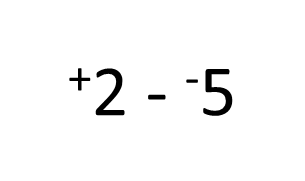This is the first part of a series of blogs on Algebra Tiles. In Part 1 of this blog series, I will be focussing on introducing Algebra Tiles to your students, making your own Algebra Tiles, and using Algebra Tiles to model the four operations with integers.
Although not part of this blog readers should be aware of the Concrete Representation Abstract Model (CRA). In this model, it is suggested that students move through a series of stages when learning a new concept. Students first experience a concept using concrete objects or manipulatives, they then draw diagrams or representations of the concepts and finally move towards the use of abstract symbols. I will be referencing this model throughout this blog series. For more information on this see the Padlet I have made to accompany this blog series.
What are Algebra Tiles?
In this video clip I introduce the three tiles and what they represent.
Why make your own Algebra Tiles?
There are many commercially available Algebra Tiles, but I like to make them with the students. This is for a number of reasons:
- The students will then feel that they “own” their tiles.
- The process of measuring and cutting can tell you a lot about your students’ skills (or lack thereof)
- The students can pick their colours – this is especially important for students with visual impairments
Here is the template I used for making my tiles and here is the template for the baseboard that I use in the videos.
To make the tiles:
- Stick two A4 sheets of foam together, this is easiest if one of the sheets has a sticky back.
- Then rule the sheet according to the template or use the measurements below:
- unit squares were 1.5cm x 1.5 cm
- variable rectangles were 1.5cm x 7cm
- variable squared squares were 7cm x 7cm
- Cut the shapes using a craft knife as scissors will pull the foam.
- Keep the tiles in a resealable bag
You might also want to give the students a laminated A3 sheet to work on, so they can annotate and write notes as they use the tiles.
Using the unit tile to model the four operations
In this video clip, I show how the unit tile can be used to model integer addition and the meaning of a zero-sum pair. This concept is key to using Algebra Tiles.
The following clips demonstrate how Algebra Tiles can be used to model the other operations, subtraction, multiplication and division and directed numbers.
Points to think about as you watch the video clips:
Using manipulatives in older year levels
It is rare to see manipulatives being used in a high school classroom. It is even rare to see them much beyond Year 3! The impression students have is that using manipulatives is infantile and only for those that are struggling. This is not the case and many (all?) students would benefit from using them, even if only for a short period.
I like to give the students time to familiarise themselves with the manipulative before I explain how we will be using them. I will ask the students to think about how they think the manipulative could be used, what mathematics it might be used with.
I might say to teachers that I “allow the students time to ‘play’ with the manipulative”, but I would be careful with the use of the term ‘play’ with students, as students should not view manipulatives as toys, as this would only reinforce the notion that they are not a serious tool for the exploration of mathematical concepts.
The language one uses
When using the tiles, be aware of the language you use. It is easy to use the same term for multiple concepts.
For instance, the word ‘minus’. Does this mean the operation subtraction or that the integer is a negative? How would you read the following?

Would you say, “plus 2, minus, minus 5”? This can be very confusing for students. By being careful to use the terms positive and negative to indicate the direction of the integer only, and not plus and minus or similar, can help to prevent this confusion. For this example, it would be better to say, “positive two, subtract, negative two”.
Giving the positive integer a direction is important. All integers have a direction. As mathematicians tend to be lazy, we drop the term positive as most numbers we deal with are positive. Students need to understand this point.
Give students plenty of time to use the manipulative
Give the students plenty of time to use the tiles. There will be students that ‘get’ the concepts very quickly and will feel that the tiles are not necessary. I would encourage the students to use the tiles a few times at least. Ask the students to record their thinking by taking photos or drawing pictures/diagrams of what they are doing (the R in the CRA model).
Remember the CRA model does not describe a linear process. Students should feel comfortable in picking up and using the manipulative anytime they feel that would be useful. The manipulatives should, therefore, be readily available and accessible.
Comments
Please use the comment section to let me know if you found this introduction to Algebra Tiles useful and, if you used them with your students, how that went.
In Part 2 of this series, I will show how Algebra Tiles can be used to build algebraic expressions, used to model the addition and subtraction of algebraic expressions, and used to model substitution into algebraic expressions.

